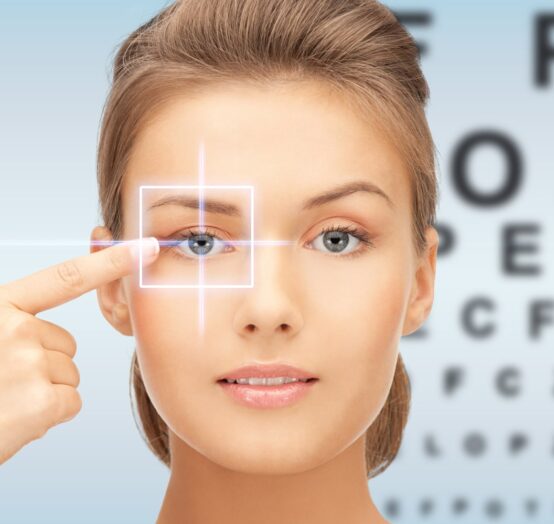EYE TREATMENTS
Cornea

EYE TREATMENTS
Cornea
The cornea is one of the most important elements of the eye. Light enters the eye first through the cornea, and it helps us to see by refracting images coming from outside. The cornea's main role is to make sure that light entering the eye reaches the retina, which then converts this pattern of light into electrical signals that travel to the brain.
Hypermetropia
Hypermetropia means that you experience blurred vision for close objects and clearer vision for distant objects. Short-sightedness occurs when the eyeball is too short or if the cornea is too flat. This means that light rays focus behind the retina, so distant objects are clearer. Hypermetropia is one of the most common eye conditions, with about 5% of the population experiencing it. It usually runs in the family and can be caused by other medical conditions, like diabetes.
KERATOCONUS TREATMENT
Keratoconus is an eye disease that is characterized by the thinning and weakening of the cornea, which is a transparent layer near the front of your eye. Keratoconus often progresses with symptoms such as myopia and astigmatism.
A type of progressive eye disease, keratoconus will typically develop in both eyes and is often seen more pronounced in one eye over the other. It will most commonly begin from the age of adolescence and may occur faster than any other symptom.
Genetic factors play a role in the emergence of the disease. Therefore, it's essential for those with family history of diabetes to get checked out by eye doctors on a regular basis.
Keratoconus usually affects people in the 10-25 age range. It often progresses from 20 onwards, but slows down after 40. There are other symptoms before the eye gradually becomes more irregular and this is what alerts us to the condition.
This also has the unfortunate result of light coming from the outside world not being able to focus on the inner part of our retina. As a result, it becomes difficult for the person to perform daily activities that he or she can do on their own, such as reading and driving.
CORNEAL TRANSPLANTATION (Keratoplasty)
The cornea is the clear tissue that covers the eye and holds back liquid in your eye.
Sometimes per cornea becomes opaque or its shape can change. In this case, a person's visual acuity will decrease. In corneal transplantation surgery, the old, cloudy layer is replaced with the transparent donor layer taken from a cadaver.
Corneal transplantation is performed in different ways, depending on the location of the lesion. If the disease has affected all of the layers then penetrating corneal transplantation is likely to be employed. If the disease has affected the anterior part of the cornea and has caused it to change shape, then only the anterior surface of cornea can be replaced. We call it deep anterior lamellar keratoplasty (DALK). If the damage to the cornea is only on the posterior part, then only that part is changed. Changing just the posterior part means there are no stitches, which is why astigmatism does not occur.
MYOPIA (NEARSIGHEDNESS)
Myopia is an eye disease in which light focuses in front of the retina instead of on it. It's an eye condition that makes distant objects blurry while you see close objects normally. People with myopia can't see far-away objects; they can only see things close to them. 1 in 3 people suffer from a common condition called myopia, which can be easily corrected with glasses, contact lenses, or surgery.
ASTIGMATISM
Astigmatism is a common condition caused by subtle flaws in how your eye refracts light. It happens when the light rays passing through the lens on the inside of your eyes don't all get bent to the same degree - resulting in a blurry image.
When the shape of the Cornea changes as in those with astigmatism, light rays can have different focal points. Astigmatism is a condition that's often noted by having an aspherical cornea. This leads to light gathering and focusing in multiple locations, thus resulting in blurry vision. Because light forms multiple focal points, this can lead to blurry vision. You may experience blurry vision both far away and close-up.
There are two types of astigmatism. The first is corneal astigmatism and the other is lenticular astigmatism. Astigmatism can be seen in combination with other refractive errors, such as myopia, hyperopia or combined with some cases of presbyopia.